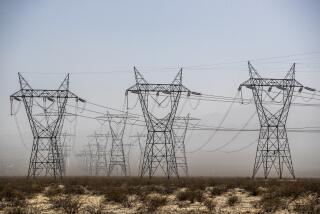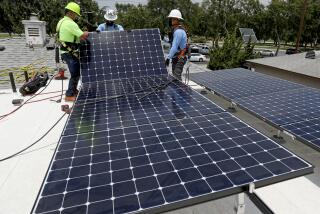Energy Commission has plan for SoCal, statewide energy demand
SACRAMENTO -- Making buildings, appliances, lighting and electronics more energy efficient and putting tighter controls on power demands during peak-consumption periods are the preferred ways to keep California’s electricity grid humming as its population and economy grow.
That’s the two top priorities unanimously approved Wednesday by California Energy Commission as part of a new Integrated Energy Policy Report.
The findings are particularly important given current strains on the Southern California transmission network by the closure in June of the San Onofre Nuclear Generating Station near San Clemente. The pending retirements of coastal power plants that discharge hot water into the ocean are also a potential problem.
The plan, drawn up every two years in coordination with the California Public Utilities Commission and the state’s electric grid operator, is a roadmap for keeping the lights on without sacrificing environmental quality or setting back efforts to curb climate change.
Programs to foster energy efficiency and so-called demand-response mechanisms are the commission’s first choices for meeting power needs over the next couple of decades. Demand-response enables utilities to use radio signals to cycle down air conditioners when temperatures are high. The technique also varies electric rates according to the time of day. The goal is to encourage homeowners to wash clothes or run swimming pool pumps during off-peak hours.
“The only way we can maintain a reliable power system in Southern California with minimal economic and environmental costs is with a balanced portfolio of preferred and conventional sources,” said Robert B. Weisenmiller, chairman of the California Energy Commission.
Conventional sources include natural-gas-fired power plants and electricity imported into the state that’s not generated by solar, wind and other renewable sources.
The mix of energy sources needs to be fine-tuned to react to climate change events, such as extreme heat storms and cold snaps that may tax the system, the report said.
Twitter: @MarcLifsher
Also:
OC, San Diego area residents don’t want gas fired plants
Electricity ratepayers may get San Onofre-linked refunds
San Onofre nuclear generating station won’t reopen







